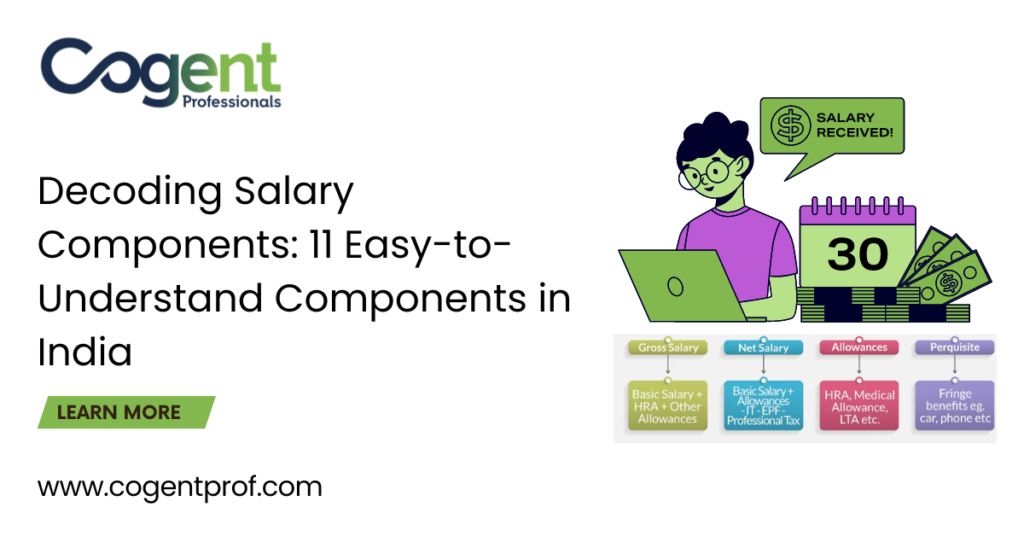
In India, salary structures can often seem like a labyrinth of acronyms and figures, leaving many employees scratching their heads when they receive their pay stubs. However, breaking down these components can provide clarity and empower individuals to make more informed financial decisions. Let’s unravel the mystery by exploring the 11 common salary components in India.
1. Basic Salary:
The foundation of every salary package, the basic salary constitutes the fixed portion of an employee’s compensation. It serves as the benchmark for other components and is subject to statutory deductions like Provident Fund (PF) and Professional Tax.
2. House Rent Allowance (HRA):
Designed to assist employees with their rental expenses, HRA is a component of the salary package that varies based on the employee’s location and actual rent paid. It offers tax benefits under certain conditions, making it a valuable part of the salary structure.
3. Dearness Allowance (DA):
DA is a cost-of-living adjustment allowance that aims to offset the impact of inflation. It is calculated as a percentage of the basic salary and is subject to periodic revisions by the government.
4. Conveyance Allowance:
This allowance covers expenses related to commuting between the employee’s residence and workplace. While it may seem nominal, conveyance allowance can provide some relief from transportation costs.
5. Leave Travel Allowance (LTA):
LTA is provided to employees to cover expenses incurred during domestic travel for vacation purposes. It is eligible for tax exemption if the employee fulfills certain criteria outlined by the Income Tax Act.
6. Medical Allowance:
Medical allowance reimburses employees for medical expenses incurred for themselves and their dependents. While it is a part of the salary package, it is often subject to reimbursement against actual bills.
7. Special Allowance:
Special allowance is a flexible component of the salary structure that employers can use to customize compensation based on individual employee needs and performance. It is fully taxable.
8. Bonus:
Bonuses are additional payments made to employees as a reward for their performance or as an incentive to achieve specific goals. They can be performance-based, profit-sharing, or discretionary, and are subject to tax deductions.
9. Provident Fund (PF):
PF is a retirement savings scheme mandated by the government, wherein both the employer and the employee contribute a percentage of the employee’s basic salary and DA. The accumulated amount is payable to the employee upon retirement or resignation.
10. Gratuity:
Gratuity is a lump sum payment made by the employer to employees as a token of appreciation for their service upon retirement, resignation, or death. It is calculated based on the employee’s tenure and last drawn salary.
11. Employee Provident Fund Organization (EPFO) and Employee State Insurance (ESI):
EPFO and ESI are statutory bodies that manage social security schemes for employees. Employers deduct contributions towards EPF and ESI from employees’ salaries and deposit them with the respective authorities for benefits like retirement savings, disability benefits, medical care, and more.
Understanding these 11 salary components can empower employees to make informed decisions about their finances, tax planning, and overall compensation negotiation. By demystifying the intricacies of salary structures, individuals can maximize their earnings and secure their financial well-being in the long run.
Ready to start investing? Explore your options with us today and save money with our financial strategies and planning services for both businesses and individuals.
Visit us at www.cogentprof.com Contact us via email at [email protected] or give us a call at +91 86961 99999



